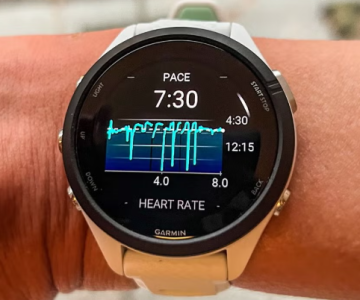Using a heart-rate monitor can be an effective way to enhance your training, allowing you to measure precisely how much effort your body is putting forth during exercise. These devices typically track your pulse through a sensor in a chest strap, offering valuable insights into your performance.
Heart rate training can help prevent a common mistake many runners make: pushing themselves too hard too often, which can increase the risk of injury and burnout. However, heart-rate training has its limitations, and it’s important to understand how to use it effectively.
Understanding Heart Rate Zones
When you work with a heart-rate monitor, you’ll target specific heart rate zones based on the intensity of your workout. These zones represent a percentage of your maximum heart rate, and different zones are ideal for various types of training. For instance, most of your runs should be in Zone 1 or Zone 2, while faster efforts, like race finishes, may push you into Zone 4.
Here’s a general breakdown of the heart rate zones:
- Zone 1 (60–70% of max heart rate): Very comfortable effort, ideal for warm-ups and cool-downs.
- Zone 2 (70–80%): Comfortable enough for conversation; most training is done in this zone.
- Zone 3 (81–93%): “Comfortably hard” effort; talking may become difficult, but short sentences are possible.
- Zone 4 (94–100%): High intensity; only a few words can be spoken at a time. This is around your 5K race pace for most runners.
Calculating Your Heart Rate Zones
For many years, runners were advised to calculate their maximum heart rate using the formula 220 minus their age. However, this approach is increasingly being questioned by experts. Instead, a more accurate method is to calculate your heart rate reserve (HRR), which accounts for your resting heart rate as well as your maximum.
To calculate your HRR:
- Determine your maximum heart rate (MHR): One way to estimate your MHR is by running a race or time trial. In a 5K, for example, you’ll likely sustain around 97% of your max heart rate. To get a more accurate number, you can do a 3K time trial: warm up with an easy 1.5K, then run the next 3K as fast as possible. Your highest heart rate during the run will be a good estimate of your max heart rate.
- Find your resting heart rate (RHR): Measure your pulse first thing in the morning before getting out of bed. Count the beats for a full 60 seconds and repeat this for seven days to get an average.
- Calculate your heart rate reserve: Subtract your resting heart rate from your maximum heart rate.
Example: If your max heart rate is 190 and your resting heart rate is 60, your heart rate reserve would be 190 – 60 = 130.
Targeting Specific Zones: To determine which heart rate to target during various training sessions, multiply your heart rate reserve by the percentage corresponding to the zone you want to train in, then add your resting heart rate back.
For example, if you aim for Zone 2 (70% effort): 130 x 0.70 + 60 = 144.5 So, you would target a heart rate of about 144 for your run.
Seeking Professional Help
If you want the most precise measurements of your max heart rate and heart rate reserve, it’s best to consult an exercise physiologist. A treadmill test, where you run at increasing speeds and inclines while your heart rate, oxygen consumption, and blood pressure are monitored, will give you accurate results.
Understanding the Limitations
While heart-rate training can be beneficial, it’s essential to recognize its limitations. For example, factors like heat, dehydration, or pain can artificially increase your heart rate, even if you’re running at a slower pace. Additionally, medications such as beta-blockers or certain migraine medications can alter heart rate readings. Uphill running may require slowing your pace to maintain the same intensity, which is perfectly fine as your fitness level improves over time.
Is Heart Rate Monitoring Right for You?
For beginners, it’s important to decide whether heart-rate training is right for you. Initially, focus on how your body feels rather than obsessing over numbers. Pay attention to the pace that allows you to hold a conversation comfortably. As you get more experienced, you can use your heart rate monitor to stay within the ideal zones, ensuring you’re not pushing too hard early in a workout.
If you’re using a run/walk interval approach, be mindful that there may be a delay between when your heart rate reaches your target and when the monitor reflects it, especially during transitions. However, tracking your heart rate can help prevent you from starting out too fast and burning out prematurely.
Before investing in a heart-rate monitor, it’s wise to speak with a healthcare provider to discuss any medications or supplements you’re taking and how they may impact your heart rate readings.





